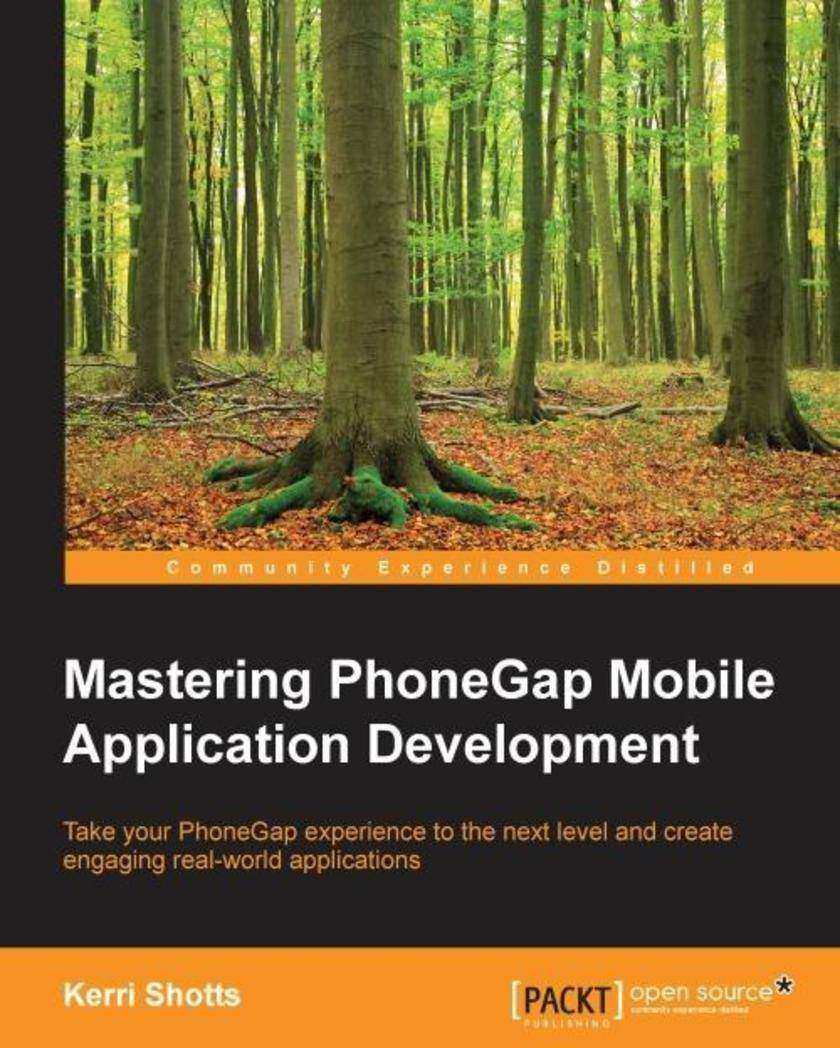
Mastering PhoneGap Mobile Application Development
¥90.46
Take your PhoneGap experience to the next level and create engaging real-world applicationsAbout This BookCreate a useful PhoneGap workflow for larger projects in order to simplify and manage the development processUse third-party plugins, IndexedDB, and SQLite for PhoneGap to develop large-scale, data-driven, and highly accessible applicationsA pragmatic guide to construct top-notch large-scale applications using PhoneGapWho This Book Is ForIf you have created simple applications using PhoneGap in the past and now want to take your workflow and apps to the next level, this book will help you reach your goals. You should have a good working knowledge of HTML, CSS, and JavaScript, and prior experience with PhoneGap.What You Will LearnConstruct build workflows that simplify complex application developmentIntegrate the next version of JavaScript to simplify your codeCreate accessible hybrid applicationsPersist and query data using third-party database pluginsCreate your own PhoneGap plugins for your unique use casesCreate icons and splash screens suitable for submission to app storesPublish your app to the Google Play and Apple iTunes storesIn DetailPhoneGap is a useful and flexible tool that enables you to create complex hybrid applications for mobile platforms. In addition to the core technology, there is a large and vibrant community that creates third-party plugins that can take your app to the next level.This book will guide you through the process of creating a complex data-driven hybrid mobile application using PhoneGap, web technologies, and third-party plugins.A good foundation is critical, so you will learn how to create a useful workflow to make development easier. From there, the next version of JavaScript (ES6) and the CSS pre-processor SASS are introduced as a way to simplify creating the look of the mobile application. Responsive design techniques are also covered, including the flexbox layout module. As many apps are data-driven, you'll build an application throughout the course of the book that relies upon IndexedDB and SQLite. You'll also download additional content and address how to handle in-app purchases. Furthermore, you’ll build your own customized plugins for your particular use case. When the app is complete, the book will guide you through the steps necessary to submit your app to the Google Play and Apple iTunes stores.Style and approachThis book is a step-by-step guide, in which the concepts covered are explained with the help of hands-on examples
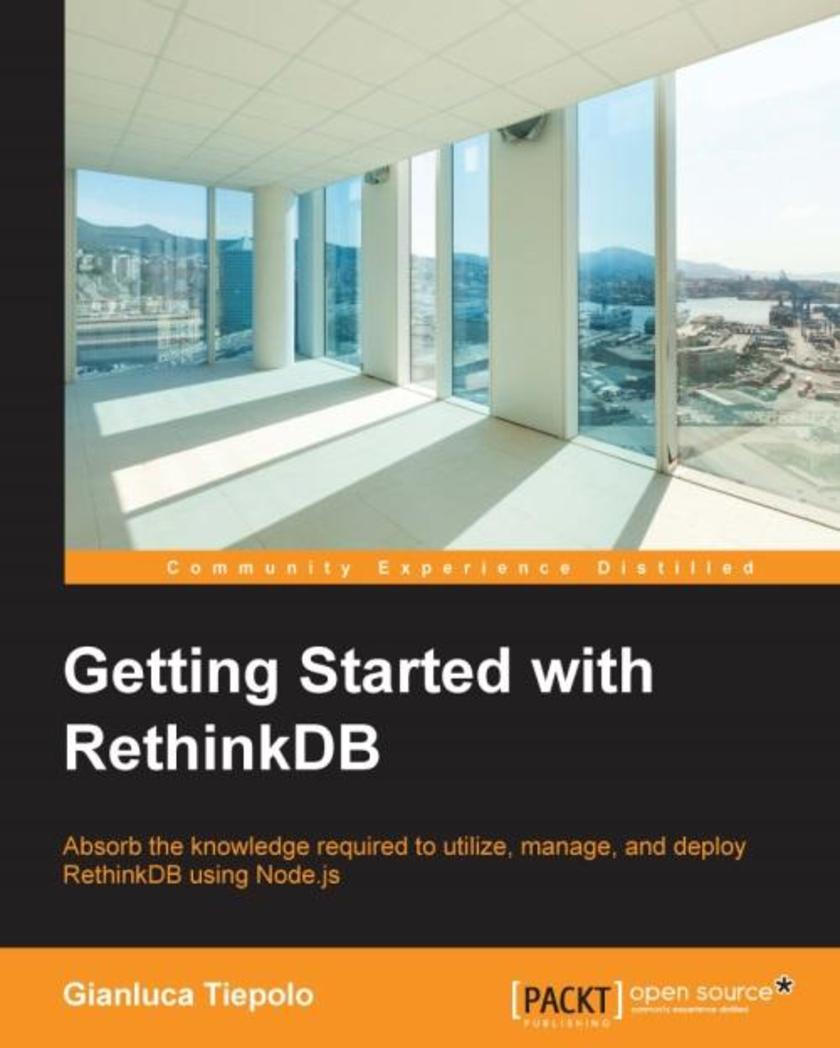
Getting Started with RethinkDB
¥63.21
Absorb the knowledge required to utilize, manage, and deploy RethinkDB using Node.js About This Book Make the most of this open source, scalable database—RethinkDB —to ease the construction of web applications Run powerful queries using ReQL, which is the most convenient language to manipulate JSON documents with Develop fully-fledged real-time web apps using Node.js and RethinkDB Who This Book Is For Getting Started with RethinkDB is ideal for developers who are new to RethinkDB and need a practical understanding to start working with it. No previous knowledge of database programming is required, although a basic knowledge of JavaScript or Node.js would be helpful. What You Will Learn Download and install the database on your system Configure RethinkDB’s settings and start using the web interface Import data into RethinkDB Run queries using the ReQL language Create shards, replicas, and RethinkDB clusters Use an index to improve database performance Get to know all the RethinkDB deployment techniques In Detail RethinkDB is a high-performance document-oriented database with a unique set of features. This increasingly popular NoSQL database is used to develop real-time web applications and, together with Node.js, it can be used to easily deploy them to the cloud with very little difficulty. Getting Started with RethinkDB is designed to get you working with RethinkDB as quickly as possible. Starting with the installation and configuration process, you will learn how to start importing data into the database and run simple queries using the intuitive ReQL query language. After successfully running a few simple queries, you will be introduced to other topics such as clustering and sharding. You will get to know how to set up a cluster of RethinkDB nodes and spread database load across multiple machines. We will then move on to advanced queries and optimization techniques. You will discover how to work with RethinkDB from a Node.js environment and find out all about deployment techniques. Finally, we’ll finish by working on a fully-fledged example that uses the Node.js framework and advanced features such as Changefeeds to develop a real-time web application. Style and approach This is a step-by-step book that provides a practical approach to RethinkDB programming, and is explained in a conversational, easy-to-follow style.

Building a Pentesting Lab for Wireless Networks
¥80.65
Build your own secure enterprise or home penetration testing lab to dig into the various hacking techniques About This Book Design and build an extendable penetration testing lab with wireless access suitable for home and enterprise use Fill the lab with various components and customize them according to your own needs and skill level Secure your lab from unauthorized access and external attacks Who This Book Is For If you are a beginner or a security professional who wishes to learn to build a home or enterprise lab environment where you can safely practice penetration testing techniques and improve your hacking skills, then this book is for you. No prior penetration testing experience is required, as the lab environment is suitable for various skill levels and is used for a wide range of techniques from basic to advance. Whether you are brand new to online learning or you are a seasoned expert, you will be able to set up your own hacking playground depending on your tasks. What You Will Learn Determine your needs and choose the appropriate lab components for them Build a virtual or hardware lab network Imitate an enterprise network and prepare intentionally vulnerable software and services Secure wired and wireless access to your lab Choose a penetration testing framework according to your needs Arm your own wireless hacking platform Get to know the methods to create a strong defense mechanism for your system In Detail Starting with the basics of wireless networking and its associated risks, we will guide you through the stages of creating a penetration testing lab with wireless access and preparing your wireless penetration testing machine. This book will guide you through configuring hardware and virtual network devices, filling the lab network with applications and security solutions, and making it look and work like a real enterprise network. The resulting lab protected with WPA-Enterprise will let you practice most of the attack techniques used in penetration testing projects. Along with a review of penetration testing frameworks, this book is also a detailed manual on preparing a platform for wireless penetration testing. By the end of this book, you will be at the point when you can practice, and research without worrying about your lab environment for every task. Style and approach This is an easy-to-follow guide full of hands-on examples and recipes. Each topic is explained thoroughly and supplies you with the necessary configuration settings. You can pick the recipes you want to follow depending on the task you need to perform.
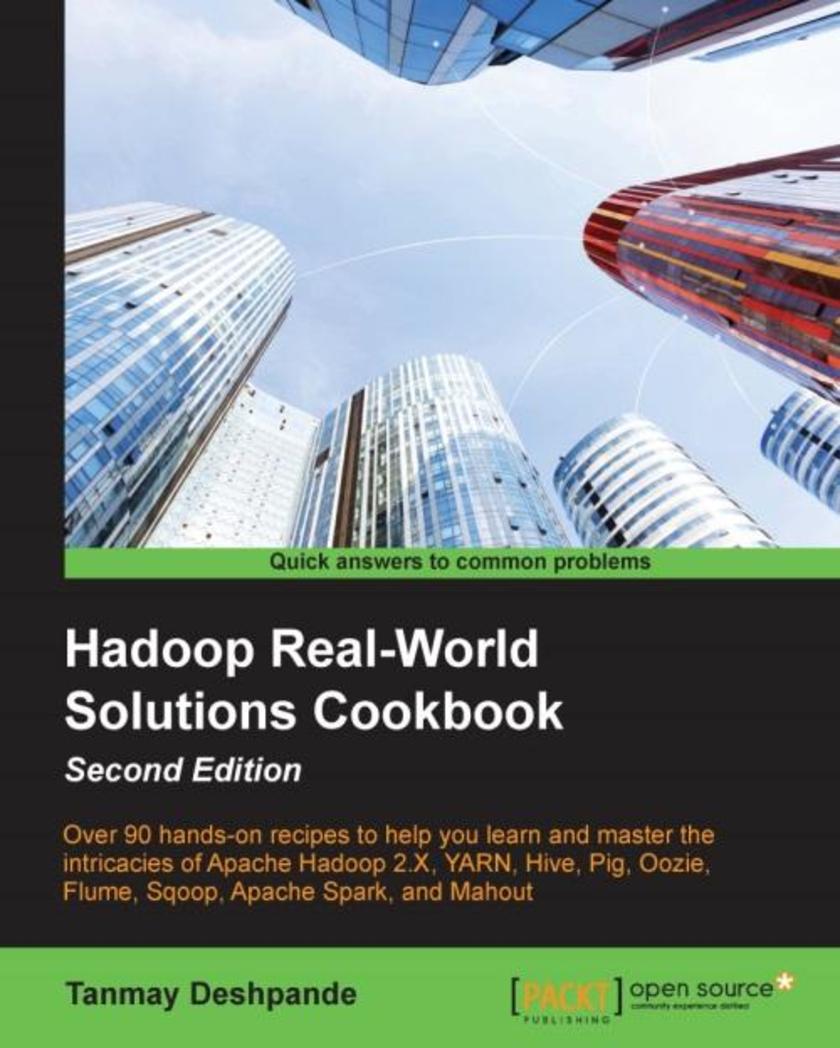
Hadoop Real-World Solutions Cookbook - Second Edition
¥99.18
Over 90 hands-on recipes to help you learn and master the intricacies of Apache Hadoop 2.X, YARN, Hive, Pig, Oozie, Flume, Sqoop, Apache Spark, and Mahout About This Book Implement outstanding Machine Learning use cases on your own analytics models and processes. Solutions to common problems when working with the Hadoop ecosystem. Step-by-step implementation of end-to-end big data use cases. Who This Book Is For Readers who have a basic knowledge of big data systems and want to advance their knowledge with hands-on recipes. What You Will Learn Installing and maintaining Hadoop 2.X cluster and its ecosystem. Write advanced Map Reduce programs and understand design patterns. Advanced Data Analysis using the Hive, Pig, and Map Reduce programs. Import and export data from various sources using Sqoop and Flume. Data storage in various file formats such as Text, Sequential, Parquet, ORC, and RC Files. Machine learning principles with libraries such as Mahout Batch and Stream data processing using Apache Spark In Detail Big data is the current requirement. Most organizations produce huge amount of data every day. With the arrival of Hadoop-like tools, it has become easier for everyone to solve big data problems with great efficiency and at minimal cost. Grasping Machine Learning techniques will help you greatly in building predictive models and using this data to make the right decisions for your organization. Hadoop Real World Solutions Cookbook gives readers insights into learning and mastering big data via recipes. The book not only clarifies most big data tools in the market but also provides best practices for using them. The book provides recipes that are based on the latest versions of Apache Hadoop 2.X, YARN, Hive, Pig, Sqoop, Flume, Apache Spark, Mahout and many more such ecosystem tools. This real-world-solution cookbook is packed with handy recipes you can apply to your own everyday issues. Each chapter provides in-depth recipes that can be referenced easily. This book provides detailed practices on the latest technologies such as YARN and Apache Spark. Readers will be able to consider themselves as big data experts on completion of this book. This guide is an invaluable tutorial if you are planning to implement a big data warehouse for your business. Style and approach An easy-to-follow guide that walks you through world of big data. Each tool in the Hadoop ecosystem is explained in detail and the recipes are placed in such a manner that readers can implement them sequentially. Plenty of reference links are provided for advanced reading.
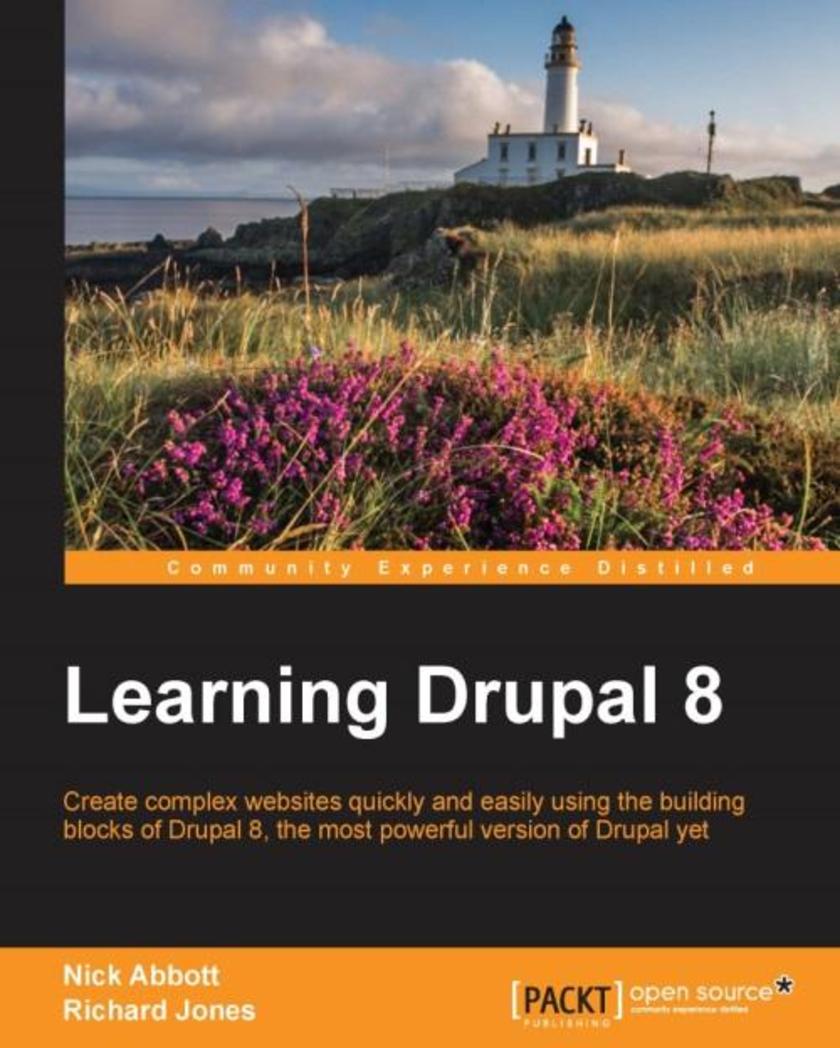
Learning Drupal 8
¥80.65
Create complex websites quickly and easily using the building blocks of Drupal 8, the most powerful version of Drupal yetAbout This BookBuild complete, complex websites with no prior knowledge of web development entirely using the intuitive Drupal user interfaceFollow a practical case study chapter-by-chapter to construct a complete website as you progressEnsure your sites are modern, responsive and mobile-friendly through utilizing the full features available in Drupal 8Who This Book Is ForIf you want to learn to use Drupal 8 for the first time, or you are transitioning over from a previous version of Drupal, this is the book for you. No knowledge of PHP, MySQL, or HTML is assumed or requiredWhat You Will LearnSet up a local “stack” development environment and install your first Drupal 8 siteFind out what is available in Drupal 8 coreDefine content types and taxonomies—and find out when you should do soUse the powerful Views moduleGet hands-on with image and media handlingExtend Drupal using custom community modulesDevelop the look and feel of your website using Drupal themesManage site users and permissionsIn DetailDrupal 8 sets a new standard for ease of use, while offering countless new ways to tailor and deploy your content to the Web. Drupal 8 allows user to easily customize data structures, listings, and pages, and take advantage of new capabilities for displaying data on mobile devices, building APIs, and adapting to multilingual needs.The book takes you step by step through building a Drupal 8 website. Start with the basics, such as setting up a local “stack” development environment and installing your first Drupal 8 site, then move on to image and media handling, and extending Drupal modules. Push your knowledge by getting to grips with the modular nature of Drupal, and learning to extend it by adding new functionalities to create your new modules. By the end of the book, you will be able to develop and manage a modern and responsive website using Drupal.Style and approachThis is an absolute beginners’ guide, providing step-by-step instructions to help you learn Drupal 8 from scratch.
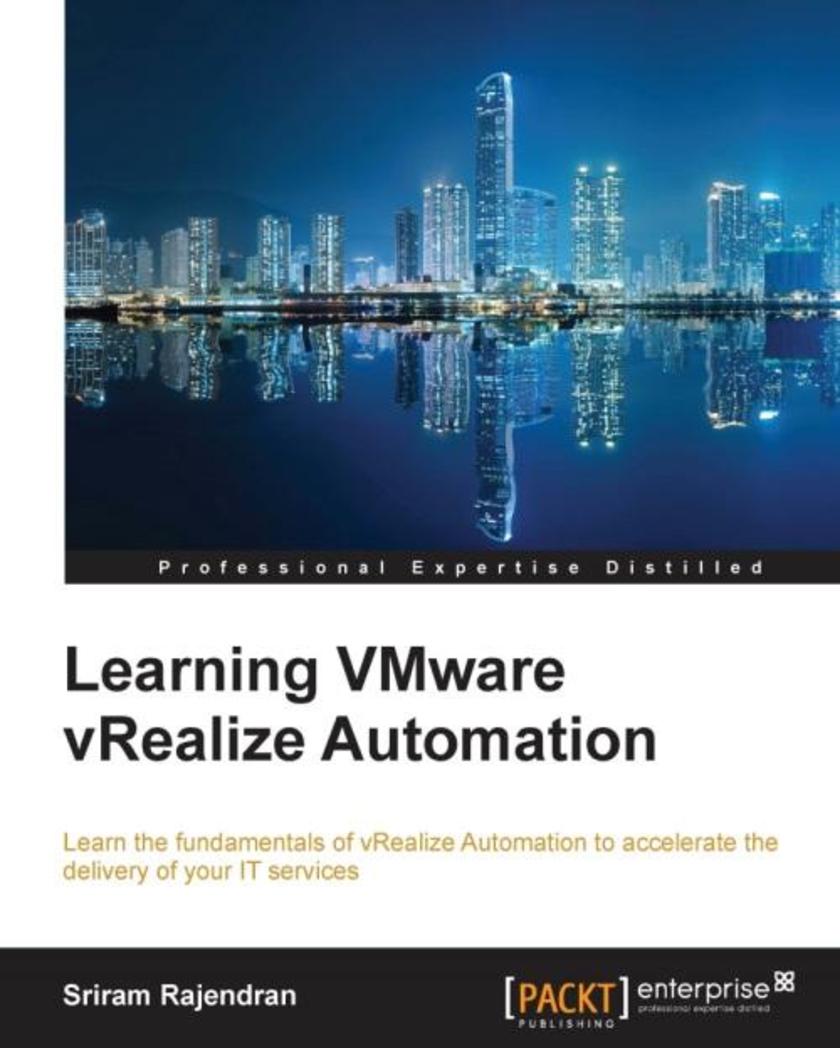
Learning VMware vRealize Automation
¥80.65
Learn the fundamentals of vRealize Automation to accelerate the delivery of your IT servicesAbout This BookLearn to install the vRealize Automation product in a distributed architecture using a load balancerPlan backup and recovery strategies for every vRealize automation componentUse vRealize Automation to manage applications and improve operational efficiency using this simple and intuitive guideWho This Book Is ForThis book is for anyone who wants to start their journey with vRealize Automation. It is your one-stop instruction guide to installing and configuring a distributed setup using NSX load balancer. Regardless of whether or not you have used vRealize Automation before, following the steps provided in each chapter will get you started with the product.What You Will LearnUnderstand the basic building blocks of vRealize Automation before embarking on the journey of installationFamiliarize yourself with the requirements and steps that need to be performed during the first phase of the distributed installationCarry out a functional validation of the first phase of installation before completing the installationBuild a blueprint for vSphere endpoint, an essential step for a successful deployment of a service catalogCreate, configure, and deploy tenants, endpoints, blueprints, and the service catalogGet to grips with the failover process for all components in vRealize AutomationLearn to configure the NSX loadbalancer for vRealize Orchestrator for high availabilityLeverage ASD to develop XaaS (Anything as a Service) in vRealize Automation to deliver valuable competenceIn DetailWith the growing interest in Software Defined Data Centers (SDDC), vRealize Automation offers data center users an organized service catalog and governance for administrators. This way, end users gain autonomy while the IT department stays in control, making sure security and compliance requirements are met. Learning what each component does and how they dovetail with each other will bolster your understanding of vRealize Automation.The book starts off with an introduction to the distributed architecture that has been tested and installed in large scale deployments. Implementing and configuring distributed architecture with custom certificates is unarguably a demanding task, and it will be covered next. After this, we will progress with the installation. A vRealize Automation blueprint can be prepared in multiple ways; we will focus solely on vSphere endpoint blueprint. After this, we will discuss the high availability configuration via NSX loadbalancer for vRealize Orchestrator. Finally, we end with Advanced Service Designer, which provides service architects with the ability to create advanced services and publish them as catalog items.Style and approachThis book takes a step-by-step approach, is explained in a conversational and easy-to-follow style, and includes ample screenshots . Each topic is explained sequentially through planning, preparing, installing, configuring, and validating of all vRealize Automation’s components.
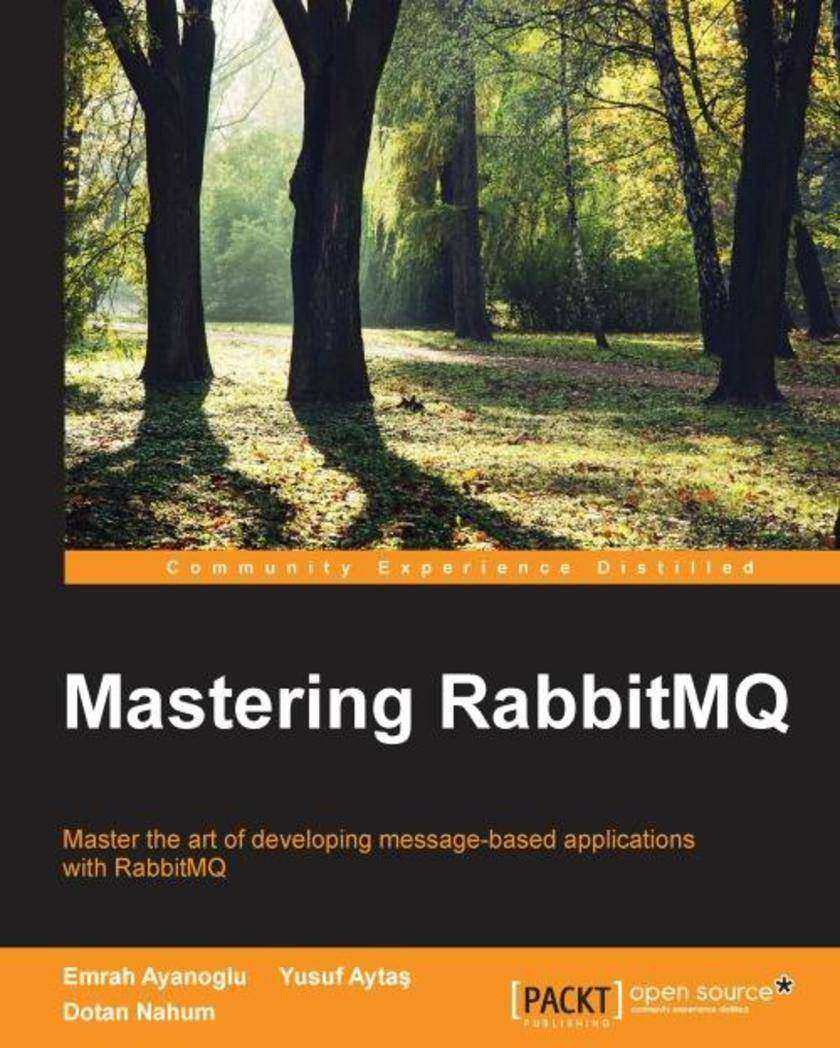
Mastering RabbitMQ
¥99.18
Master the art of developing message-based applications with RabbitMQAbout This BookLearn how to administer, manage, and extend your own message broker, RabbitMQDevelop clients to make a message bridge between your software systems using RabbitMQDiscover how to achieve proficiency with RabbitMQ with the well-defined de*ions of the topicsWho This Book Is ForIf you are an intermediate-level RabbitMQ developer, who wants to achieve professional-level expertise in the subject, this book is for you. You’ll also need to have a decent understanding of message queuing.What You Will LearnAdminister RabbitMQ using different toolsUnderstand the roots and details of messaging, message brokers, and AMQP protocolScale the RabbitMQ server using the clusters and high availability techniquesExtend RabbitMQ by developing the Erlang OTP-based applications that use the RabbitMQ APIManage the RabbitMQ server using its powerful toolsMonitor the RabbitMQ Server using different open source tools such as Nagios, Munin, and ZabbixEnsure your RabbitMQ’s security using SSL, SASL, and access controlDevelop RabbitMQ clients using Java, Python, and C# with an industry exampleIn DetailRabbitMQ is one of the most powerful Open Source message broker software, which is widely used in tech companies such as Mozilla, VMware, Google, AT&T, and so on. RabbitMQ gives you lots of fantastic and easy-to-manage functionalities to control and manage the messaging facility with lots of community support. As scalability is one of our major modern problems, messaging with RabbitMQ is the main part of the solution to this problem.This book explains and demonstrates the RabbitMQ server in a detailed way. It provides you with lots of real-world examples and advanced solutions to tackle the scalability issues.You’ll begin your journey with the installation and configuration of the RabbitMQ server, while also being given specific details pertaining to the subject. Next, you’ll study the major problems that our server faces, including scalability and high availability, and try to get the solutions for both of these issues by using the RabbitMQ mechanisms. Following on from this, you’ll get to design and develop your own plugins using the Erlang language and RabbitMQ’s internal API. This knowledge will help you to start with the management and monitoring of the messages, tools, and applications. You’ll also gain an understanding of the security and integrity of the messaging facilities that RabbitMQ provides. In the last few chapters, you will build and keep track of your clients (senders and receivers) using Java, Python, and C#.Style and approach An easy-to-follow guide, full of hands-on examples based around managing, monitoring, extending, and securing RabbitMQ and its internal tools. You will learn how to develop your own clients using Java, Python, and C#.

VMware Performance and Capacity Management - Second Edition
¥107.90
Master SDDC Operations with proven best practices About This Book Understand the drawbacks of the traditional paradigm and management that make operations difficult in SDDC Master performance and capacity management in Software-Defined Data Center Operationalize performance and capacity monitoring with proven dashboards Who This Book Is For This book is primarily for any system administrator or cloud infrastructure specialist who is interested in performance management and capacity management using VMware technologies. This book will also help IT professionals whose area of responsibility is not VMware, but who work with the VMware team. You can be Windows, Linux, Storage, or Network team; or application architects. Note that prior exposure to the VMware platform of data-center and cloud-based solutions is expected. What You Will Learn Simplify the task of performance and capacity management Master the counters in vCenter and vRealize Operations and understand their dependency on one another Educate your peers and management on SDDC Operations Complete your SDDC monitoring to include non-VMware components Perform SDDC performance troubleshooting Explore real-life examples of how super metric and advanced dashboards Introduce and implement a Performance SLA Accomplish your Capacity Management by taking into service tiering and performance SLA In Detail Performance management and capacity management are the two top-most issues faced by enterprise IT when doing virtualization. Until the first edition of the book, there was no in-depth coverage on the topic to tackle the issues systematically. The second edition expands the first edition, with added information and reorganizing the book into three logical parts. The first part provides the technical foundation of SDDC Management. It explains the difference between a software-defined data center and a classic physical data center, and how it impacts both architecture and operations. From this strategic view, it zooms into the most common challenges—performance management and capacity management. It introduces a new concept called Performance SLA and also a new way of doing capacity management. The next part provides the actual solution that you can implement in your environment. It puts the theories together and provides real-life examples created together with customers. It provides the reasons behind each dashboard, so that you get the understanding on why it is required and what problem it solves. The last part acts as a reference section. It provides a complete reference to vSphere and vRealize Operations counters, explaining their dependencies and providing practical guidance on the values you should expect in a healthy environment. Style and approach This book covers the complex topic of managing performance and capacity in an easy-to-follow style. It relates real-world scenarios to topics in order to help you implement the book’s teachings on the go.
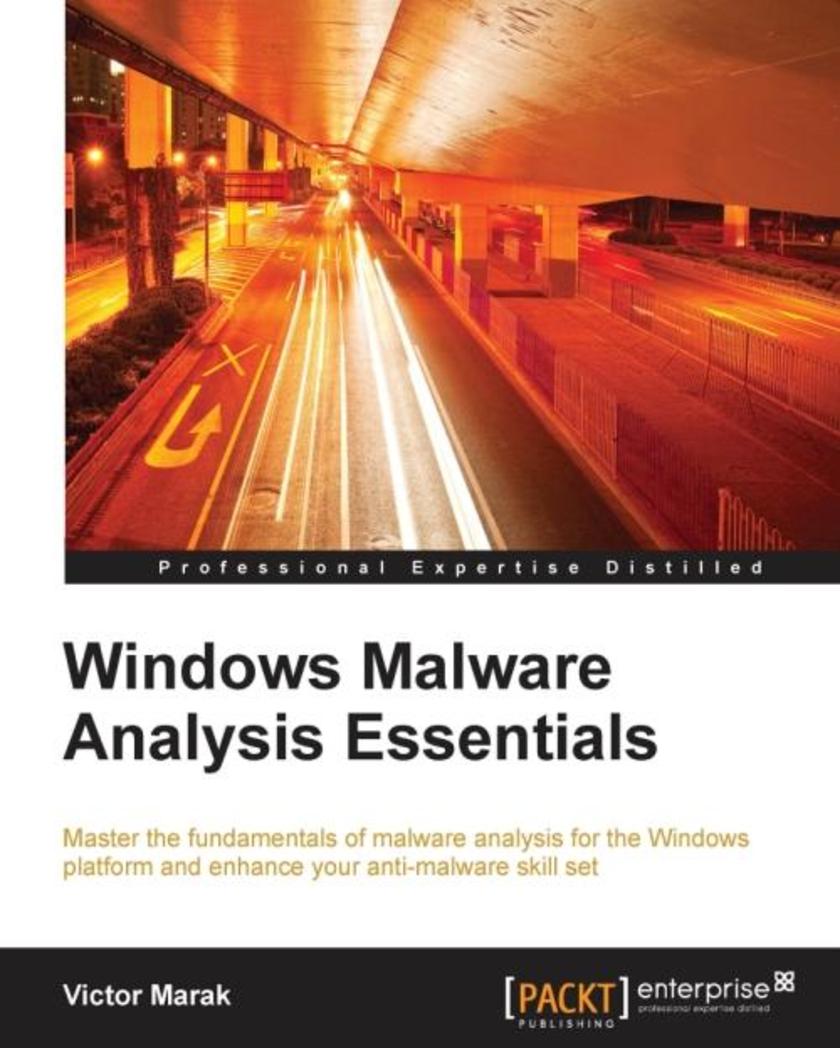
Windows Malware Analysis Essentials
¥90.46
Master the fundamentals of malware analysis for the Windows platform and enhance your anti-malware skill set About This Book Set the baseline towards performing malware analysis on the Windows platform and how to use the tools required to deal with malware Understand how to decipher x86 assembly code from source code inside your favourite development environment A step-by-step based guide that reveals malware analysis from an industry insider and demystifies the process Who This Book Is For This book is best for someone who has prior experience with reverse engineering Windows executables and wants to specialize in malware analysis. The book presents the malware analysis thought process using a show-and-tell approach, and the examples included will give any analyst confidence in how to approach this task on their own the next time around. What You Will Learn Use the positional number system for clear conception of Boolean algebra, that applies to malware research purposes Get introduced to static and dynamic analysis methodologies and build your own malware lab Analyse destructive malware samples from the real world (ITW) from fingerprinting and static/dynamic analysis to the final debrief Understand different modes of linking and how to compile your own libraries from assembly code and integrate the codein your final program Get to know about the various emulators, debuggers and their features, and sandboxes and set them up effectively depending on the required scenario Deal with other malware vectors such as pdf and MS-Office based malware as well as *s and shellcode In Detail Windows OS is the most used operating system in the world and hence is targeted by malware writers. There are strong ramifications if things go awry. Things will go wrong if they can, and hence we see a salvo of attacks that have continued to disrupt the normal scheme of things in our day to day lives. This book will guide you on how to use essential tools such as debuggers, disassemblers, and sandboxes to dissect malware samples. It will expose your innards and then build a report of their indicators of compromise along with detection rule sets that will enable you to help contain the outbreak when faced with such a situation. We will start with the basics of computing fundamentals such as number systems and Boolean algebra. Further, you'll learn about x86 assembly programming and its integration with high level languages such as C++.You'll understand how to decipher disassembly code obtained from the compiled source code and map it back to its original design goals. By delving into end to end analysis with real-world malware samples to solidify your understanding, you'll sharpen your technique of handling destructive malware binaries and vector mechanisms. You will also be encouraged to consider analysis lab safety measures so that there is no infection in the process. Finally, we'll have a rounded tour of various emulations, sandboxing, and debugging options so that you know what is at your disposal when you need a specific kind of weapon in order to nullify the malware. Style and approach An easy to follow, hands-on guide with de*ions and screenshots that will help you execute effective malicious software investigations and conjure up solutions creatively and confidently.
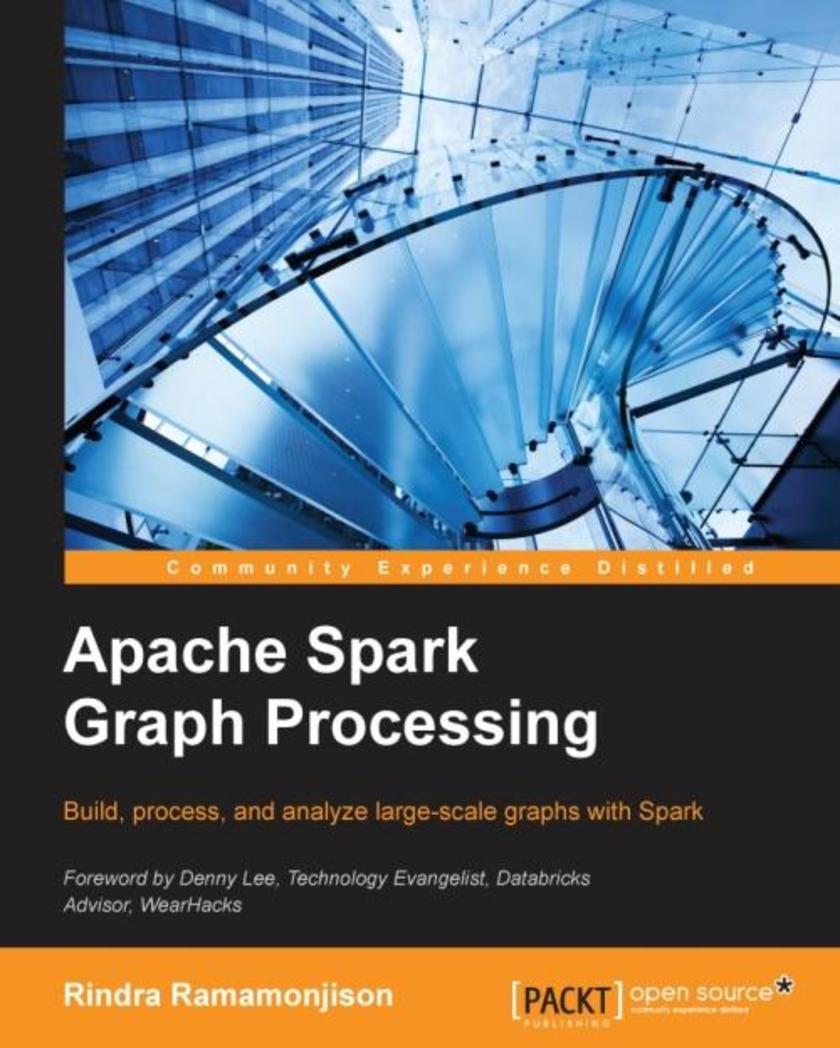
Apache Spark Graph Processing
¥63.21
Build, process and analyze large-scale graph data effectively with Spark About This Book Find solutions for every stage of data processing from loading and transforming graph data to Improve the scalability of your graphs with a variety of real-world applications with complete Scala code. A concise guide to processing large-scale networks with Apache Spark. Who This Book Is For This book is for data scientists and big data developers who want to learn the processing and analyzing graph datasets at scale. Basic programming experience with Scala is assumed. Basic knowledge of Spark is assumed. What You Will Learn Write, build and deploy Spark applications with the Scala Build Tool. Build and analyze large-scale network datasets Analyze and transform graphs using RDD and graph-specific operations Implement new custom graph operations tailored to specific needs. Develop iterative and efficient graph algorithms using message aggregation and Pregel abstraction Extract subgraphs and use it to discover common clusters Analyze graph data and solve various data science problems using real-world datasets. In Detail Apache Spark is the next standard of open-source cluster-computing engine for processing big data. Many practical computing problems concern large graphs, like the Web graph and various social networks. The scale of these graphs - in some cases billions of vertices, trillions of edges - poses challenges to their efficient processing. Apache Spark GraphX API combines the advantages of both data-parallel and graph-parallel systems by efficiently expressing graph computation within the Spark data-parallel framework. This book will teach the user to do graphical programming in Apache Spark, apart from an explanation of the entire process of graphical data analysis. You will journey through the creation of graphs, its uses, its exploration and analysis and finally will also cover the conversion of graph elements into graph structures. This book begins with an introduction of the Spark system, its libraries and the Scala Build Tool. Using a hands-on approach, this book will quickly teach you how to install and leverage Spark interactively on the command line and in a standalone Scala program. Then, it presents all the methods for building Spark graphs using illustrative network datasets. Next, it will walk you through the process of exploring, visualizing and analyzing different network characteristics. This book will also teach you how to transform raw datasets into a usable form. In addition, you will learn powerful operations that can be used to transform graph elements and graph structures. Furthermore, this book also teaches how to create custom graph operations that are tailored for specific needs with efficiency in mind. The later chapters of this book cover more advanced topics such as clustering graphs, implementing graph-parallel iterative algorithms and learning methods from graph data. Style and approach A step-by-step guide that will walk you through the key ideas and techniques for processing big graph data at scale, with practical examples that will ensure an overall understanding of the concepts of Spark.
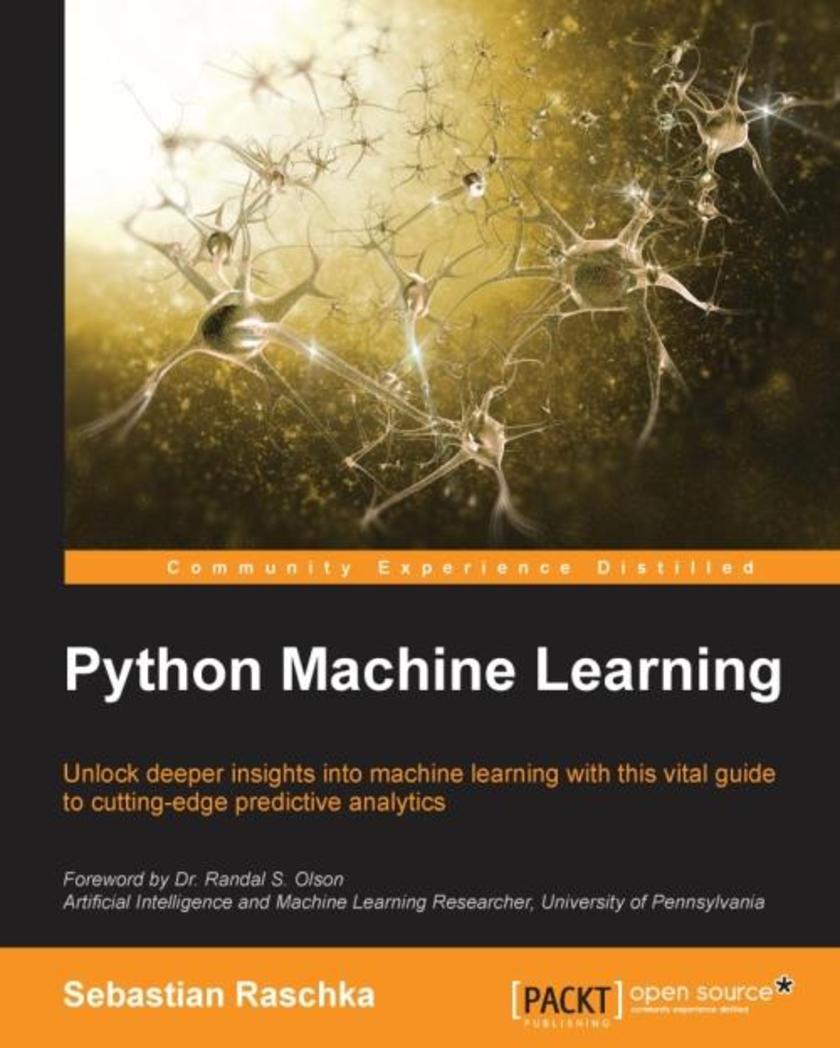
Python Machine Learning
¥80.65
Unlock deeper insights into Machine Leaning with this vital guide to cutting-edge predictive analytics About This Book Leverage Python’s most powerful open-source libraries for deep learning, data wrangling, and data visualization Learn effective strategies and best practices to improve and optimize machine learning systems and algorithms Ask – and answer – tough questions of your data with robust statistical models, built for a range of datasets Who This Book Is For If you want to find out how to use Python to start answering critical questions of your data, pick up Python Machine Learning – whether you want to get started from scratch or want to extend your data science knowledge, this is an essential and unmissable resource. What You Will Learn Explore how to use different machine learning models to ask different questions of your data Learn how to build neural networks using Keras and Theano Find out how to write clean and elegant Python code that will optimize the strength of your algorithms Discover how to embed your machine learning model in a web application for increased accessibility Predict continuous target outcomes using regression analysis Uncover hidden patterns and structures in data with clustering Organize data using effective pre-processing techniques Get to grips with sentiment analysis to delve deeper into textual and social media data In Detail Machine learning and predictive analytics are transforming the way businesses and other organizations operate. Being able to understand trends and patterns in complex data is critical to success, becoming one of the key strategies for unlocking growth in a challenging contemporary marketplace. Python can help you deliver key insights into your data – its unique capabilities as a language let you build sophisticated algorithms and statistical models that can reveal new perspectives and answer key questions that are vital for success. Python Machine Learning gives you access to the world of predictive analytics and demonstrates why Python is one of the world’s leading data science languages. If you want to ask better questions of data, or need to improve and extend the capabilities of your machine learning systems, this practical data science book is invaluable. Covering a wide range of powerful Python libraries, including scikit-learn, Theano, and Keras, and featuring guidance and tips on everything from sentiment analysis to neural networks, you’ll soon be able to answer some of the most important questions facing you and your organization. Style and approach Python Machine Learning connects the fundamental theoretical principles behind machine learning to their practical application in a way that focuses you on asking and answering the right questions. It walks you through the key elements of Python and its powerful machine learning libraries, while demonstrating how to get to grips with a range of statistical models.
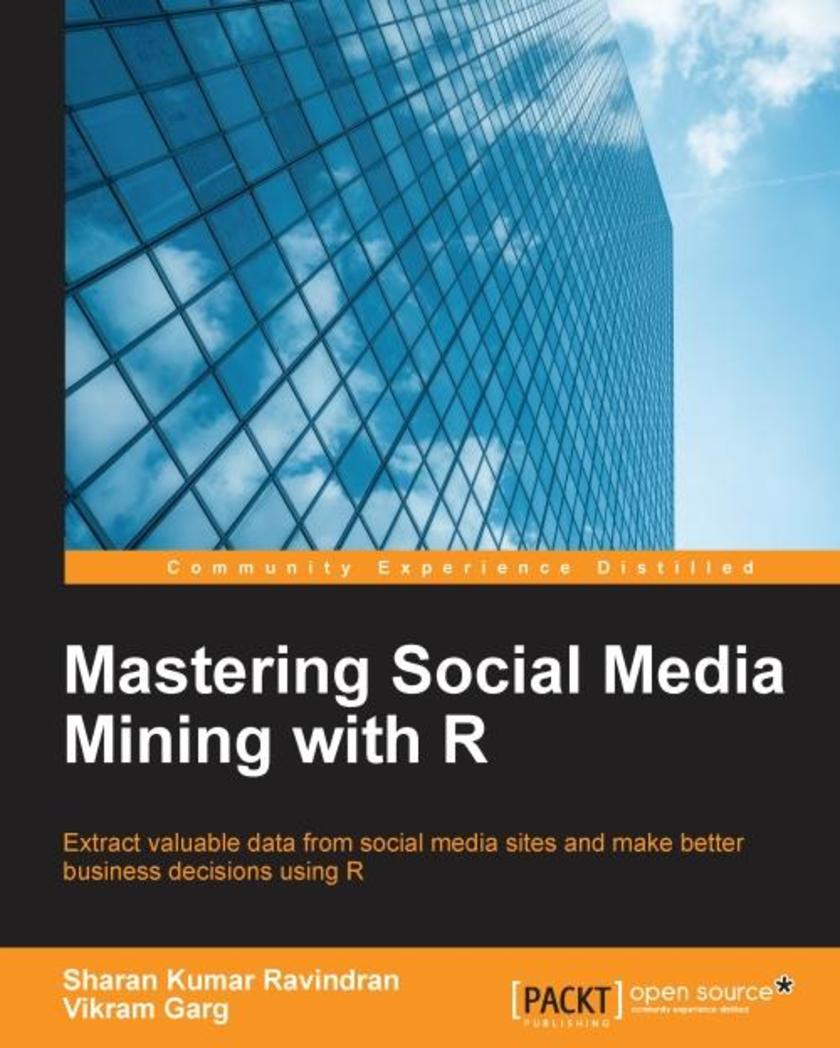
Mastering Social Media Mining with R
¥63.21
Extract valuable data from your social media sites and make better business decisions using R About This Book Explore the social media APIs in R to capture data and tame it Employ the machine learning capabilities of R to gain optimal business value A hands-on guide with real-world examples to help you take advantage of the vast opportunities that come with social media data Who This Book Is For If you have basic knowledge of R in terms of its libraries and are aware of different machine learning techniques, this book is for you. Those with experience in data analysis who are interested in mining social media data will find this book useful. What You Will Learn Access APIs of popular social media sites and extract data Perform sentiment analysis and identify trending topics Measure CTR performance for social media campaigns Implement exploratory data analysis and correlation analysis Build a logistic regression model to detect spam messages Construct clusters of pictures using the K-means algorithm and identify popular personalities and destinations Develop recommendation systems using Collaborative Filtering and the Apriori algorithm In Detail With an increase in the number of users on the web, the content generated has increased substantially, bringing in the need to gain insights into the untapped gold mine that is social media data. For computational statistics, R has an advantage over other languages in providing readily-available data extraction and transformation packages, making it easier to carry out your ETL tasks. Along with this, its data visualization packages help users get a better understanding of the underlying data distributions while its range of "standard" statistical packages simplify analysis of the data. This book will teach you how powerful business cases are solved by applying machine learning techniques on social media data. You will learn about important and recent developments in the field of social media, along with a few advanced topics such as Open Authorization (OAuth). Through practical examples, you will access data from R using APIs of various social media sites such as Twitter, Facebook, Instagram, GitHub, Foursquare, LinkedIn, Blogger, and other networks. We will provide you with detailed explanations on the implementation of various use cases using R programming. With this handy guide, you will be ready to embark on your journey as an independent social media analyst. Style and approach This easy-to-follow guide is packed with hands-on, step-by-step examples that will enable you to convert your real-world social media data into useful, practical information.
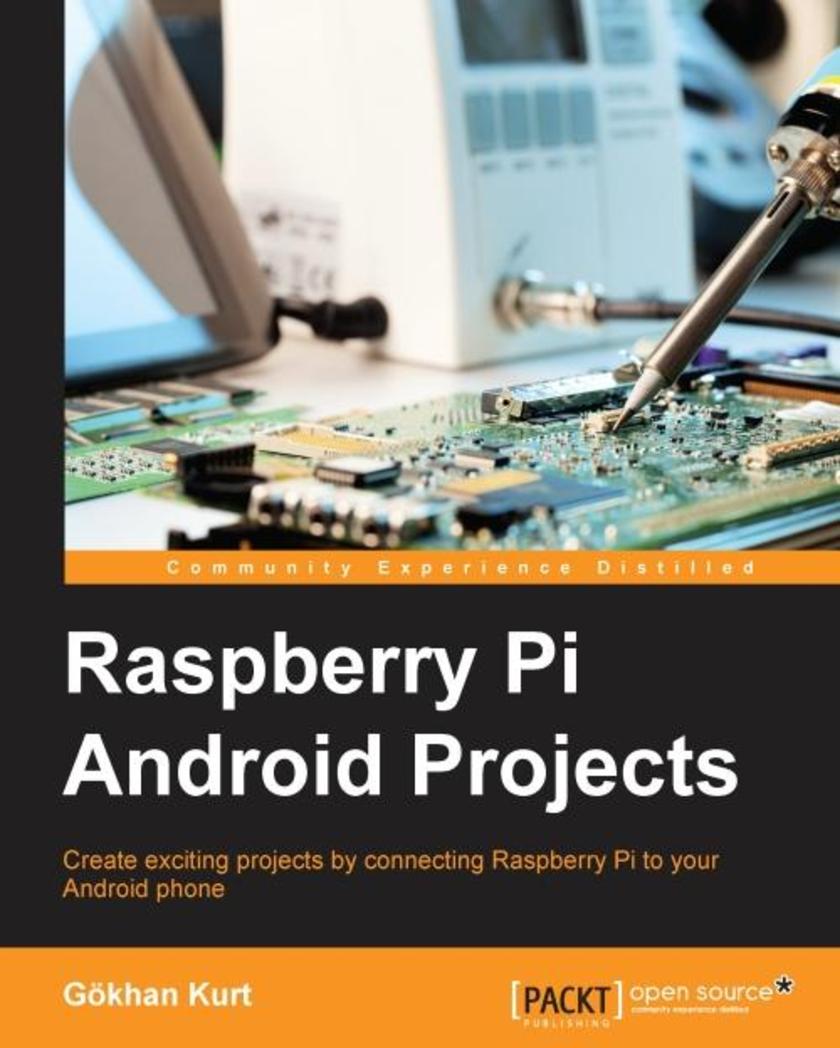
Raspberry Pi Android Projects
¥63.21
Create exciting projects by connecting the Raspberry Pi to your Android phone About This Book Manage most of the fundamental functions of Raspberry Pi from your Android phone Use the projects created in this book to develop even more exciting projects in the future A project-based learning experience to help you discover amazing ways to combine the power of Android and Raspberry Pi Who This Book Is For The target audience for this book includes Raspberry Pi enthusiasts, hobbyists, and anyone who wants to create engaging projects with Android OS. Some knowledge of Android programming would be helpful. What You Will Learn Install the tools required on your Pi and Android to manage and administer the Pi from Android Share your files between different Android devices using the Pi as a server Set up the Pi to live-stream the camera in surveillance mode and customize Android to receive this content Turn your Pi into a media center and control it from your Android See your Android display on a large screen using Raspberry Pi Connect your car's dashboard to your Android device using Raspberry Pi In Detail Raspberry Pi is the credit card-sized, general purpose computer which has revolutionized portable technology. Android is an operating system that widely used in mobile phones today both on the high and low ends of the mobile phone market. However, there is little information about how to connect the two in spite of how popular both of them are. Raspberry Pi Android Projects starts with simple projects that help you access the command prompt and the desktop environment of Raspberry Pi from the comfort of your Android phone or tablet. Then, you will be introduced to more complex projects that combine the strengths of the Pi and Android in amazing ways. These projects will teach you how to manage services on the Pi from Android, share files between Android devices using the Pi as a server, administer and view the Pi’s camera from Android in surveillance mode, and connect your car to the Pi and make data more accessible using Android. The introductory projects covered will be useful each time you need to access or administer your Pi for other purposes, and the more advanced projects will continue to be valuable even after you become an expert on Pi. By the end of this book, you will be able to create engaging and useful projects that will help you combine the powers of both Android and Raspberry Pi. Style and approach A quick and easy-to-follow guide that will show how you can add up the power of Pi and Android by combining them.
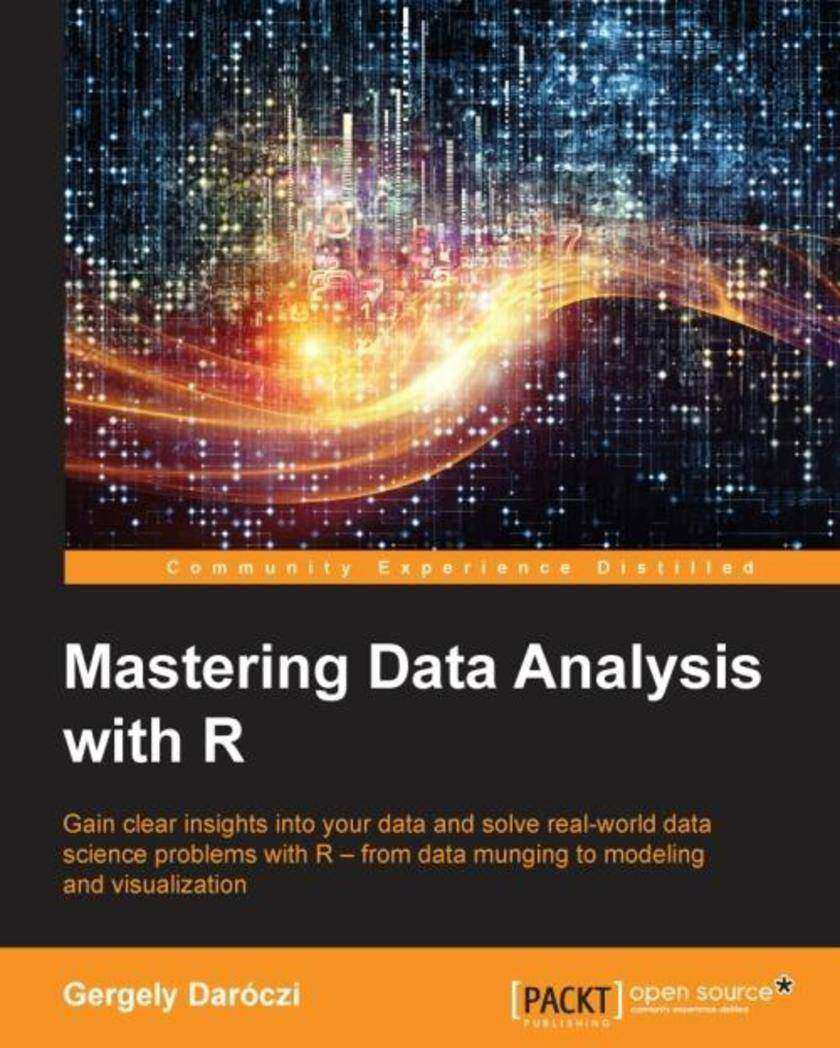
Mastering Data Analysis with R
¥99.18
Gain sharp insights into your data and solve real-world data science problems with R—from data munging to modeling and visualization About This Book Handle your data with precision and care for optimal business intelligence Restructure and transform your data to inform decision-making Packed with practical advice and tips to help you get to grips with data mining Who This Book Is For If you are a data scientist or R developer who wants to explore and optimize your use of R’s advanced features and tools, this is the book for you. A basic knowledge of R is required, along with an understanding of database logic. What You Will Learn Connect to and load data from R’s range of powerful databases Successfully fetch and parse structured and unstructured data Transform and restructure your data with efficient R packages Define and build complex statistical models with glm Develop and train machine learning algorithms Visualize social networks and graph data Deploy supervised and unsupervised classification algorithms Discover how to visualize spatial data with R In Detail R is an essential language for sharp and successful data analysis. Its numerous features and ease of use make it a powerful way of mining, managing, and interpreting large sets of data. In a world where understanding big data has become key, by mastering R you will be able to deal with your data effectively and efficiently. This book will give you the guidance you need to build and develop your knowledge and expertise. Bridging the gap between theory and practice, this book will help you to understand and use data for a competitive advantage. Beginning with taking you through essential data mining and management tasks such as munging, fetching, cleaning, and restructuring, the book then explores different model designs and the core components of effective analysis. You will then discover how to optimize your use of machine learning algorithms for classification and recommendation systems beside the traditional and more recent statistical methods. Style and approach Covering the essential tasks and skills within data science, Mastering Data Analysis provides you with solutions to the challenges of data science. Each section gives you a theoretical overview before demonstrating how to put the theory to work with real-world use cases and hands-on examples.
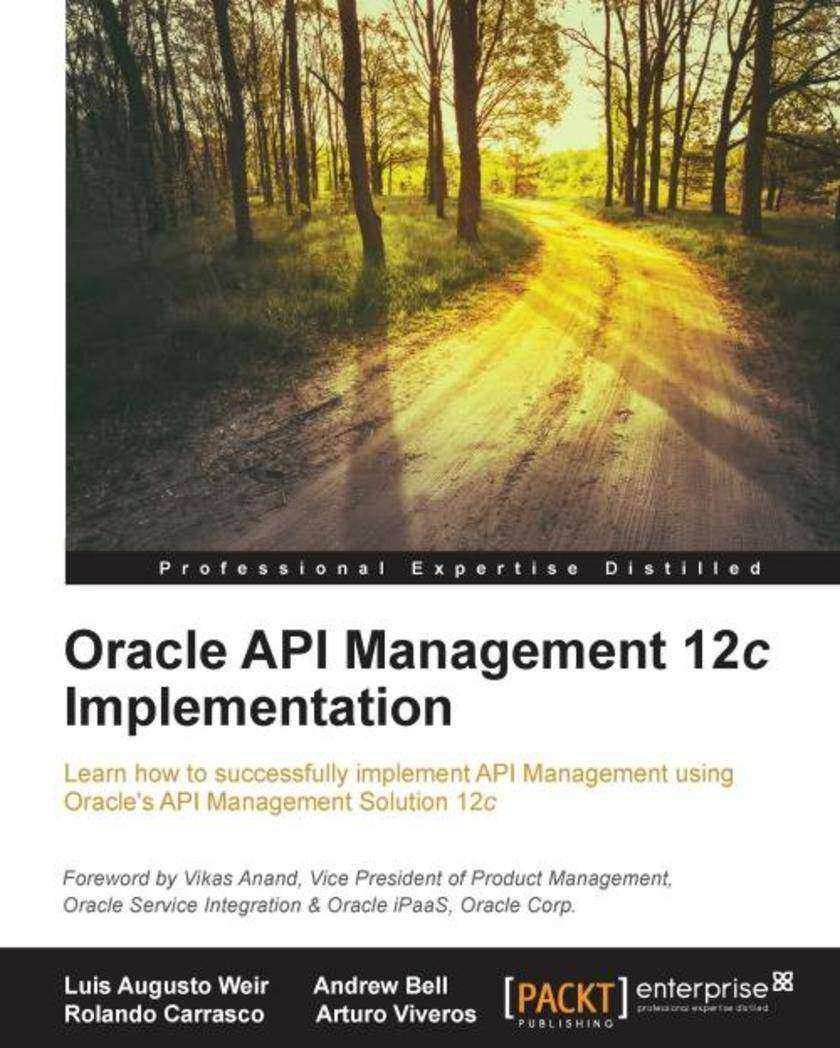
Oracle API Management 12c Implementation
¥107.90
Learn how to successfully implement API management using Oracle’s API Management Solution 12c About This Book Explore the key concepts, goals, and objectives of API Management and learn how to implement it using the Oracle API Management Solution Understand the concepts and objectives of the Application Service Governance (ASG), along with the governance framework that encompasses people, processes, and technology Get to grips with API Management readiness assessments, gap analysis, digital reference architecture, and implementation roadmaps Who This Book Is For This book is for Enterprise Architects, Solution Architects, Technical Architects, and SOA and API consultants who want to successfully implement API Management using the Oracle API Management Solution products. What You Will Learn Understand how to manage a set of APIs Discover the differences and similarities between API Management and SOA Governance, and where and how these two disciplines converge into Application Services Governance (ASG) Grasp information about ASG and how to define an ASG governance framework Understand the challenges for organizations looking to expose APIs to the external world. Identify common scenarios and how to solve them Define an Oracle API management deployment topology Install and configure Oracle API Catalog (OAC), Oracle API Manager (OAPIM), and Oracle API Gateway (OAG) Learn about API sub*ions and API community management with the OAPIM portal Implement Oracle API Manager (OAPIM) including creation, publishing, management and deprecation of APIs In Detail Oracle SOA Governance is a comprehensive, service-orientated governance solution that is designed to make the transition to SOA easier. API management is the discipline that governs the software development lifecycle of APIs. It defines the tools and processes needed to build, publish and operate APIs including the management of the community of developers around it. This book illustrates how to successfully implement API Management in your organization. To achieve this, the importance of defining an API management strategy and implementation roadmap so that capabilities are implemented in the right order and timeframes is described. It starts by describing all of the fundamental concepts around API Management and related disciplines such as SOA Governance and DevOps in order to dispel the confusion surrounding these topics. The book then takes you on the journey of implementing API Management, using a realistic case study of an organization that needs an API Management solution. You will start by identifying the key business drivers to implement APIs and then create an API Management strategy and a roadmap to realize this strategy. You’ll then go through a number of use cases, each focused on addressing specific business requirements. These will help you understand each of the Oracle API Management products, how they fit into an overall architecture, and how to implement them. The book concludes by providing some tips and guidelines around defining a deployment topology for the Oracle API Management products and the steps to install them. Style and approach This book is a comprehensive guide to successfully implementing a complete API Management solution from inception to implementation. The initial chapters introduce you to Oracle SOA Governance and API Management and from there, chapters are mainly hands-on and provide a full step-by-step walkthrough of how to implement the products of the Oracle API management solution to address realistic use cases.

The Dangerous Dandy
¥24.44
Left all but penniless by the death of her husband, Lady Maude Camberley is reduced to scraping a living through gambling and the generosity of Society gentlemen. So when the stupendously wealthy but conceited and cruel Prince Ahmadi of Kahriz offers her ten thousand pounds for the hand in marriage of her young beautiful daughter, Alyna, she accepts at once. Poor Alyna is utterly mortified and horrified as she finds the Prince utterly repulsive and could bear it if he touched her. Her mother will not listen to her pleas as she is frantic for the money the Prince has offered her. Alyna is so desperate that she is on the verge of suicide when a handsome Good Samaritan dissuades her on the bank of the River Thames. He is the handsome and debonair Lord Dorrington, who is instantly struck by Alyna’s plight and he then sets about protecting her from the evil Prince’s clutches. Alynda is adamant that she hates all men and will never marry, but gradually the noble good looks and gentle humour of Lord Dorrington helps to change her mind. And just as she realises that she is in love, the dastardly Prince reappears bent on revenge and she fears desperately for the life of her newfound love.
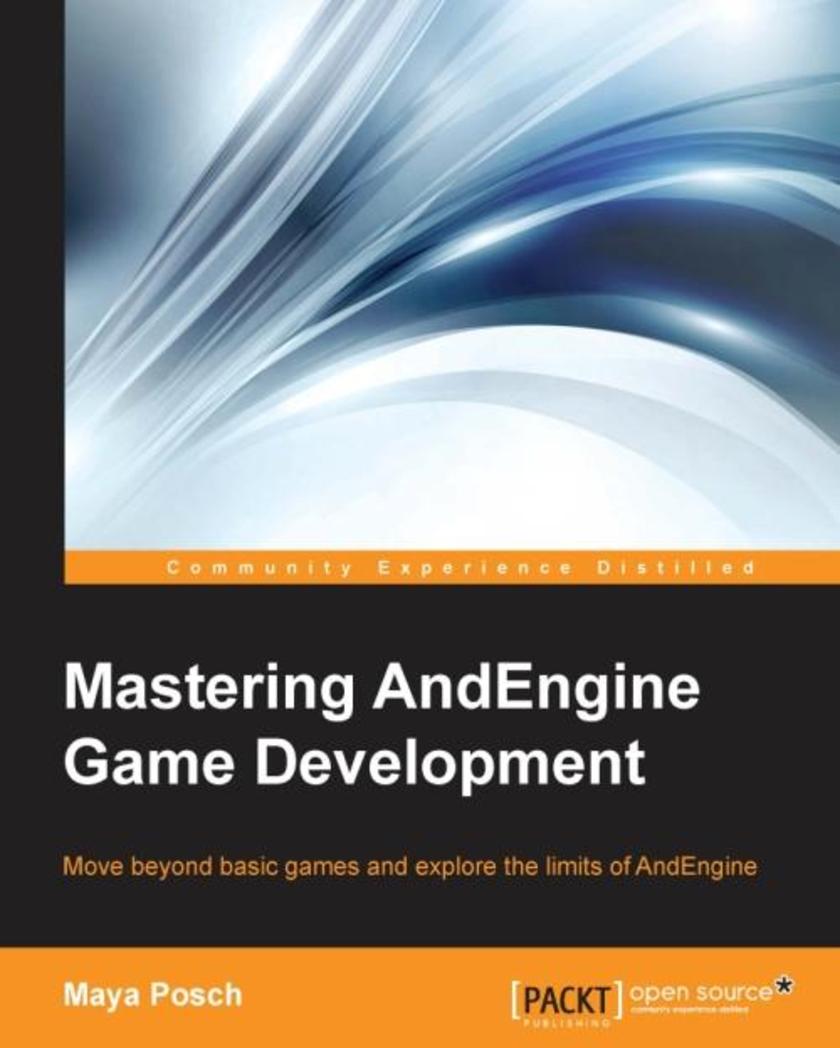
Mastering AndEngine Game Development
¥80.65
Move beyond basic games and explore the limits of AndEngine About This Book Extend the basic AndEngine features without modifying any of AndEngine's code Understand advanced technologies and gain the skills to create the ultimate games in AndEngine Theory supported with practical examples to stimulate your imagination and creativity Who This Book Is For This book is aimed at developers who have gone through all the basic AndEngine tutorials and books, and are looking for something more. It's also very suitable for developers with knowledge of other game engines who are looking to develop with AndEngine. Knowledge of Java, C++ and Android development are a prerequisite for getting the most out of this book. What You Will Learn Extend AndEngine to use and render 3D models Integrate and use various physics engines with AndEngine Advanced animations and their implementation in AndEngine Lighting theory and its application for both 2D and 3D objects Using skeletal animation with AndEngine Use GLSL shaders with AndEngine for effects and anti-aliasing Add sounds and effects to AndEngine using both basic and 3D audio libraries Efficient network implementations with AndEngine for multi-players In Detail AndEngine is a popular and easy-to-use game framework, best suited for Android game development. After learning the basics of creating an Android game using AndEngine it's time you move beyond the basics to explore further. For this you need to understand the theory behind many of the technologies AndEngine uses. This book aims to provide all the skills and tools you need to learn more about Android game development using AndEngine. With this book you will get a quick overview of the basics of AndEngine and Android application development. From there, you will learn how to use 3D models in a 2D scene, render a visual representation of a scene's objects, and create interaction between these objects. You will explore frame-based animations and learn to use skeletal animations. As the book progresses, you will be guided through exploring all the relevant aspects of rendering graphics with OpenGL ES, generating audio using OpenSL ES and OpenAL, making the best use of Android's network API, implementing anti-aliasing algorithms, shaders, dynamic lighting and much more. With all this, you will be ready to enhance the look and feel of your game with its user interface, sound effects and background music. After an in-depth study of 2D and 3D worlds and multi-player implementations, you will be a master in AndEngine and Android game development. Style and approach This book takes an in-depth tour of the many aspects of Android game development with the use of AndEngine. Each topic is covered extensively to act both as a practical guide as well as a reference.
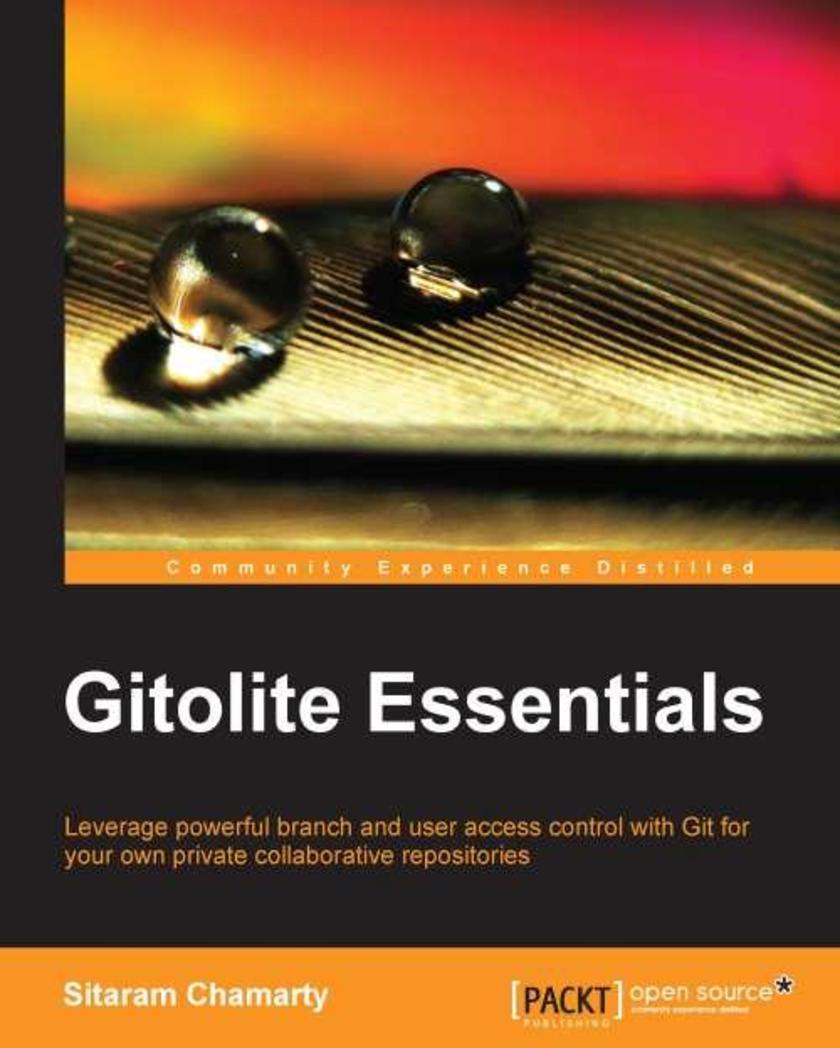
Gitolite Essentials
¥54.49
The book is written to suit an easyreading style, using typical problems in access control to illustrate the need for each Gitolite feature explained. This book is for system administrators or development managers who need to keep a lid on Gitbased development workflows. Basic knowledge of Git as well as of the Unix shell is helpful.
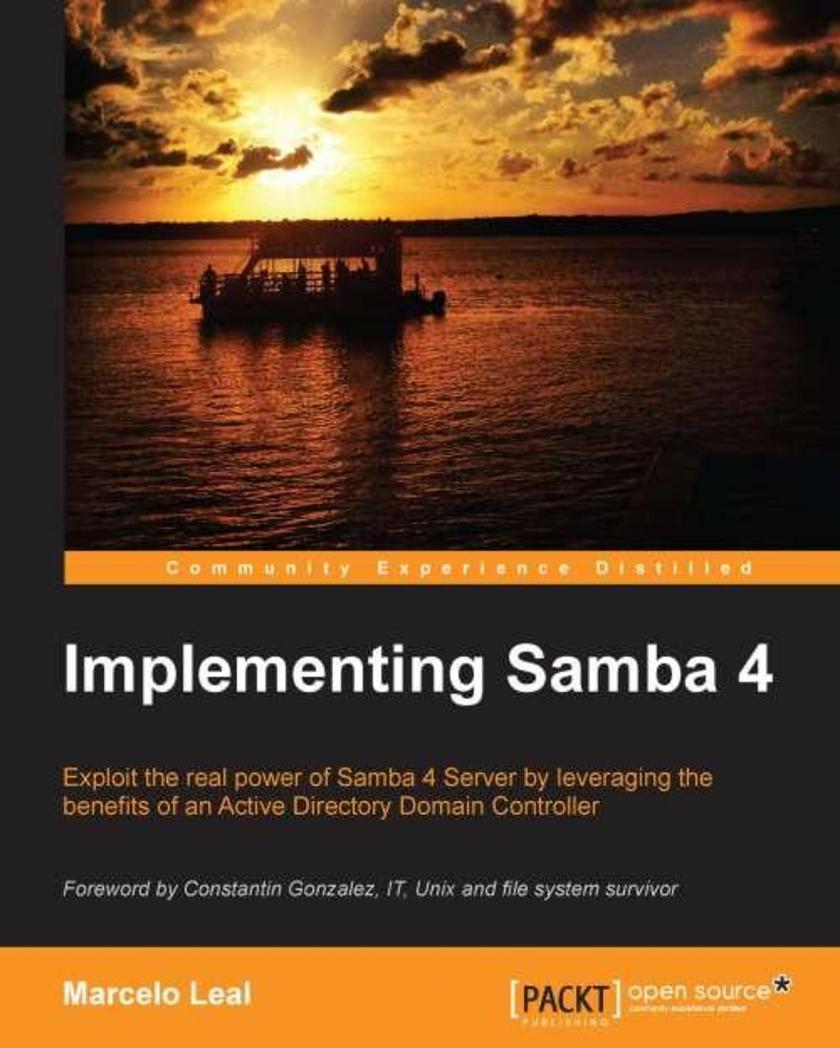
Implementing Samba 4
¥90.46
This book is an implementation tutorial covering stepbystep procedures, examples, and sample code, and has a practical approach to set up a Samba 4 Server as an Active Directory Domain Controller and also set up different Samba 4 server roles. This book is ideal for system administrators who are new to the Samba 4 software, and who are looking to get a good grounding in how to use Samba 4 to implement Active Directory Services. It's assumed that you will have some experience with general system administration, Active Directory, and GNU/Linux systems. Readers are expected to have some test machines (virtual machines), which will be used to execute the examples within this book.
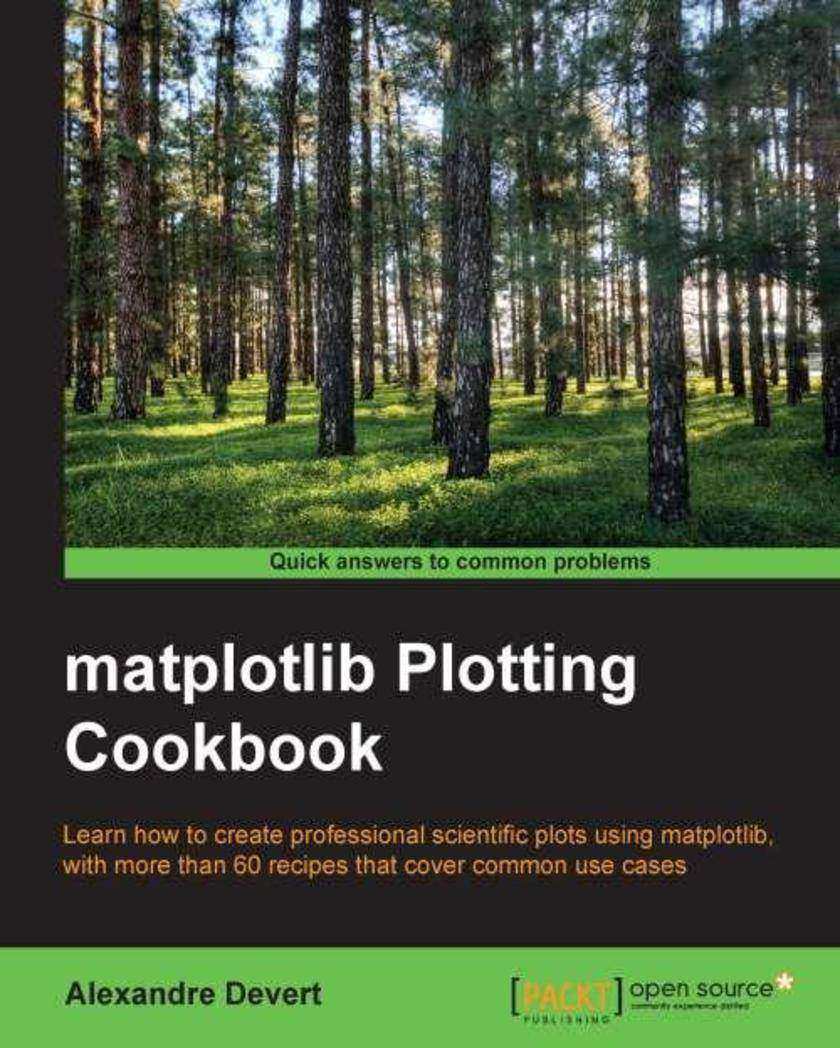
Matplotlib Plotting Cookbook
¥80.65
This book follows a cookbook style approach that puts orthogonal and nonredundant recipes in your hands. Rather than rehashing the user manual, the explanations expose the underlying logic behind Matplotlib. If you are an engineer or scientist who wants to create great visualizations with Python, rather than yet another specialized language, this is the book for you. While there are several very competent plotting packages, Matplotlib is “just” a Python module. Thus, if you know some Python already, you will feel at home from the first steps on. In case you are an application writer, you won't be left out since the integration of Matplolib is covered.
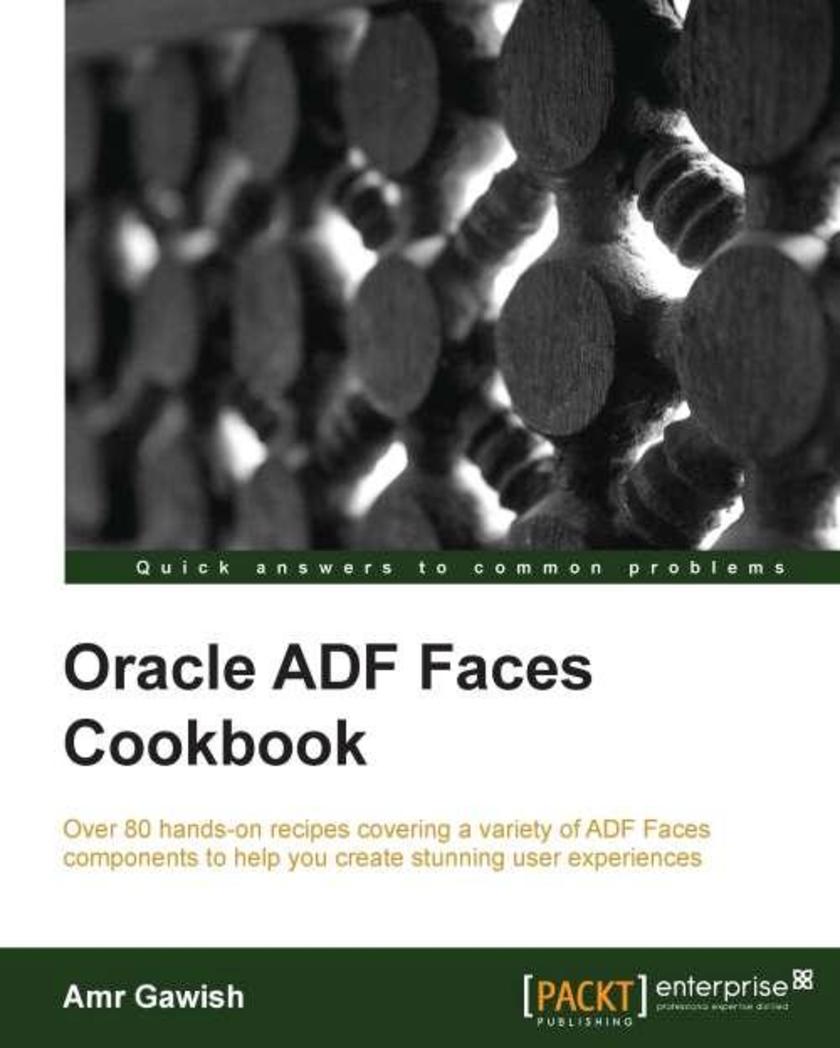
Oracle ADF Faces Cookbook
¥90.46
This is a cookbook that covers more than 80 different recipes to teach you about different aspects of Oracle ADF Faces. It follows a practical approach and covers how to build your components for reuse in different applications. This book will also help you in tuning the performance of your ADF Faces application. If you are an ADF developer who wants to harness the power of Oracle ADF Faces to create exceptional user interfaces and reactive applications, this book will provide you with the recipes needed to do just that. You will not need to be familiar with Oracle ADF Faces, but you should be comfortable with Java application development, Java EE frameworks, and JSF. This book is also for ADF developers who know how to use Oracle ADF Faces but who want to know what’s new in Oracle ADF Faces 12c.




 购物车
购物车 个人中心
个人中心



